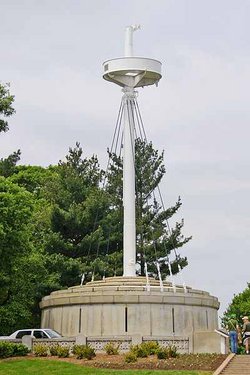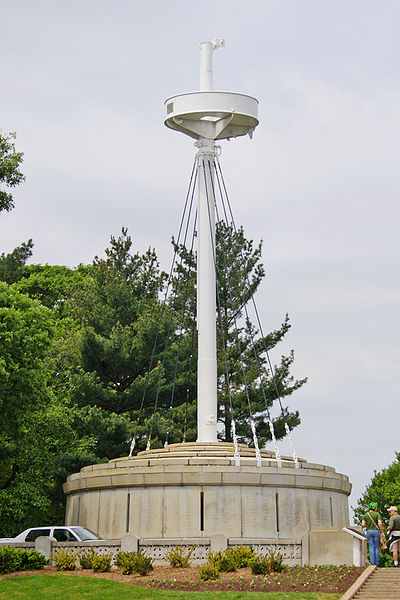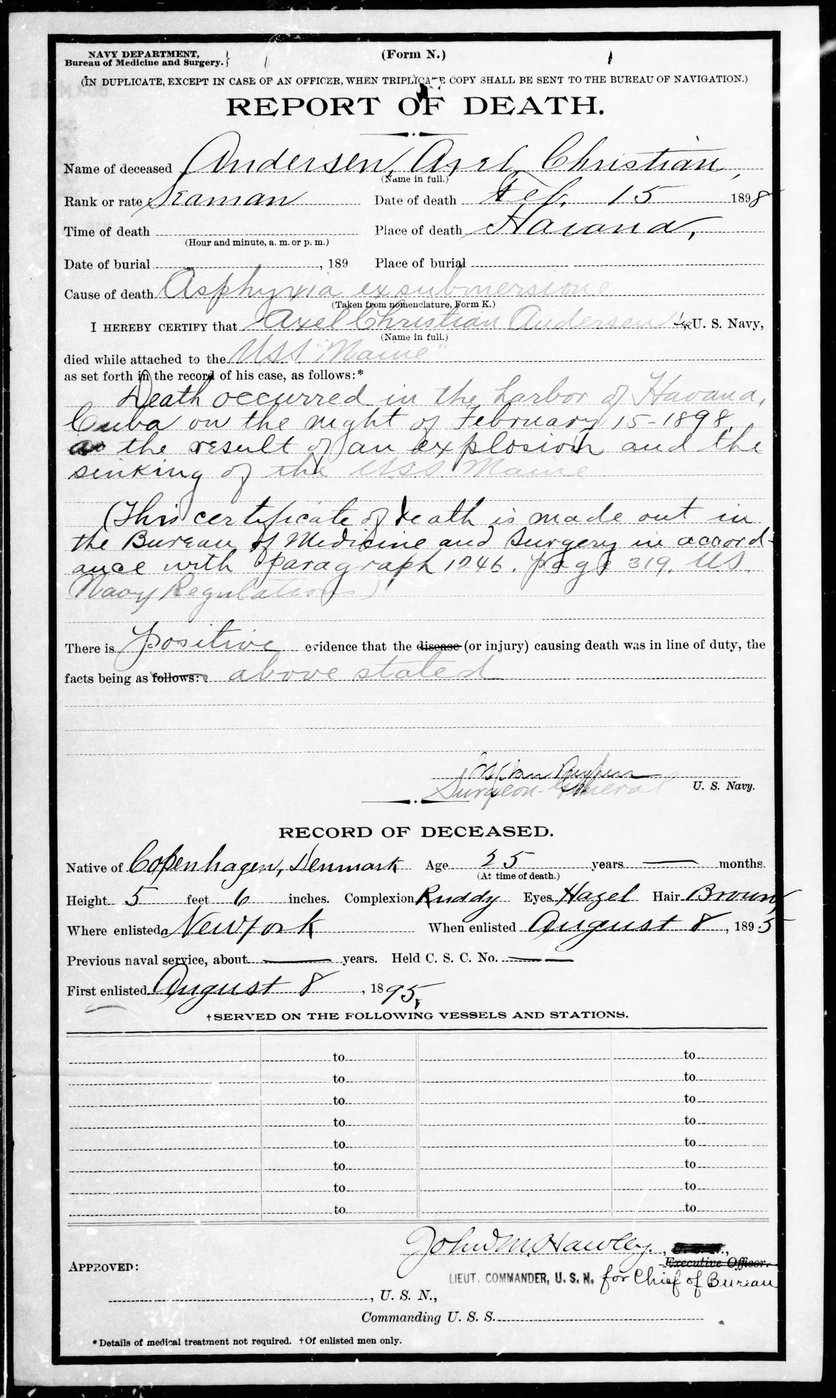USS Maine (ACR-1) was the United States Navy's second commissioned pre-dreadnought battleship and the first U.S. Navy ship to be named after the state of Maine.[a][1] Originally classified as an armored cruiser, she was built in response to the Brazilian battleship Riachuelo and the increase of naval forces in Latin America. Maine and her near-sister ship Texas reflected the latest European naval developments, with the layout of her main armament resembling that of the British ironclad Inflexible and comparable Italian ships. Her two gun turrets were staggered en échelon, one sponsoned out on each side of the ship, with cutaways in the superstructure to allow both to fire ahead, astern or across her deck. She dispensed with full masts thanks to the increased reliability of steam engines by the time of her construction.
Despite these advances, the Maine was out of date by the time she entered service, due to her protracted construction period and changes in the role of ships of her type, naval tactics and technology. The general use of steel in warship construction precluded the use of ramming without danger to the attacking vessel. The potential for blast damage from firing end–on or cross–deck discouraged en échelon gun placement; the practice was phased out of European naval designs before Maine entered service. The changing role of the armored cruiser from a small, heavily–armored substitute for the battleship to a fast, lightly–armored commerce raider also hastened her obsolescence. Despite these disadvantages, Maine was seen as an advance in American warship design.
The Maine is best known for her catastrophic loss in Havana harbor on the evening of 15 February 1898. Sent to protect U.S. interests during the Cuban revolt against Spain, she exploded suddenly without warning and sank quickly, killing nearly three quarters of her crew. The cause and responsibility for her sinking remained unclear after a board of inquiry. Nevertheless, popular opinion in the U.S., fanned by inflammatory articles printed in the "Yellow Press" by William Randolph Hearst and Joseph Pulitzer, blamed Spain. The phrase "Remember the Maine, to Hell with Spain!" became a rallying cry for action, which came with the Spanish–American War later that year. While the sinking of the Maine was not a direct cause for action, it served as a catalyst, accelerating the approach to a diplomatic impasse between the U.S. and Spain.
The cause of the Maine's sinking remains the subject of speculation. Suggestions have included an undetected fire in one of her coal bunkers, a naval mine and her deliberate sinking to drive the U.S. into a war with Spain.
Click Photos for Additional Info .....
Please send any additional information you may have on this man. USE EDIT ....
Click Link to see all The Lost Sailors I've Found
http://www.findagrave.com/cgi-bin/fg.cgi?page=vcsr&GSvcid=266131
USS Maine (ACR-1) was the United States Navy's second commissioned pre-dreadnought battleship and the first U.S. Navy ship to be named after the state of Maine.[a][1] Originally classified as an armored cruiser, she was built in response to the Brazilian battleship Riachuelo and the increase of naval forces in Latin America. Maine and her near-sister ship Texas reflected the latest European naval developments, with the layout of her main armament resembling that of the British ironclad Inflexible and comparable Italian ships. Her two gun turrets were staggered en échelon, one sponsoned out on each side of the ship, with cutaways in the superstructure to allow both to fire ahead, astern or across her deck. She dispensed with full masts thanks to the increased reliability of steam engines by the time of her construction.
Despite these advances, the Maine was out of date by the time she entered service, due to her protracted construction period and changes in the role of ships of her type, naval tactics and technology. The general use of steel in warship construction precluded the use of ramming without danger to the attacking vessel. The potential for blast damage from firing end–on or cross–deck discouraged en échelon gun placement; the practice was phased out of European naval designs before Maine entered service. The changing role of the armored cruiser from a small, heavily–armored substitute for the battleship to a fast, lightly–armored commerce raider also hastened her obsolescence. Despite these disadvantages, Maine was seen as an advance in American warship design.
The Maine is best known for her catastrophic loss in Havana harbor on the evening of 15 February 1898. Sent to protect U.S. interests during the Cuban revolt against Spain, she exploded suddenly without warning and sank quickly, killing nearly three quarters of her crew. The cause and responsibility for her sinking remained unclear after a board of inquiry. Nevertheless, popular opinion in the U.S., fanned by inflammatory articles printed in the "Yellow Press" by William Randolph Hearst and Joseph Pulitzer, blamed Spain. The phrase "Remember the Maine, to Hell with Spain!" became a rallying cry for action, which came with the Spanish–American War later that year. While the sinking of the Maine was not a direct cause for action, it served as a catalyst, accelerating the approach to a diplomatic impasse between the U.S. and Spain.
The cause of the Maine's sinking remains the subject of speculation. Suggestions have included an undetected fire in one of her coal bunkers, a naval mine and her deliberate sinking to drive the U.S. into a war with Spain.
Click Photos for Additional Info .....
Please send any additional information you may have on this man. USE EDIT ....
Click Link to see all The Lost Sailors I've Found
http://www.findagrave.com/cgi-bin/fg.cgi?page=vcsr&GSvcid=266131
Advertisement
Explore more
Sponsored by Ancestry
Advertisement



